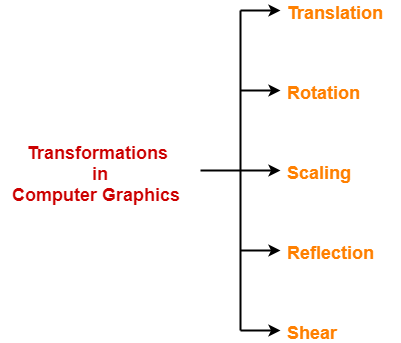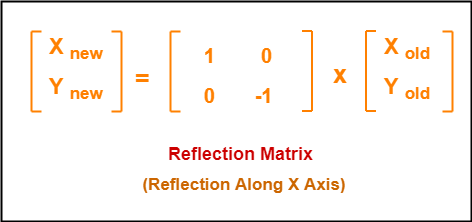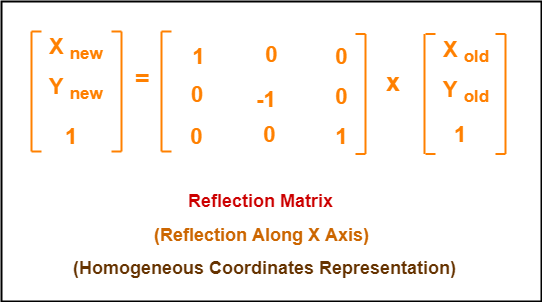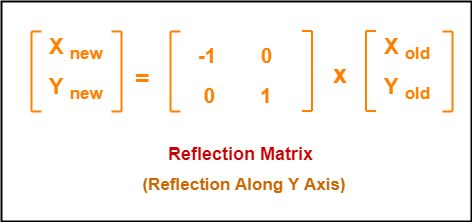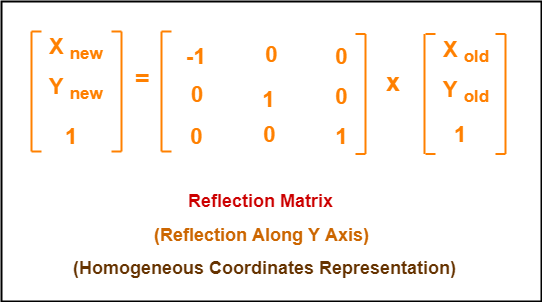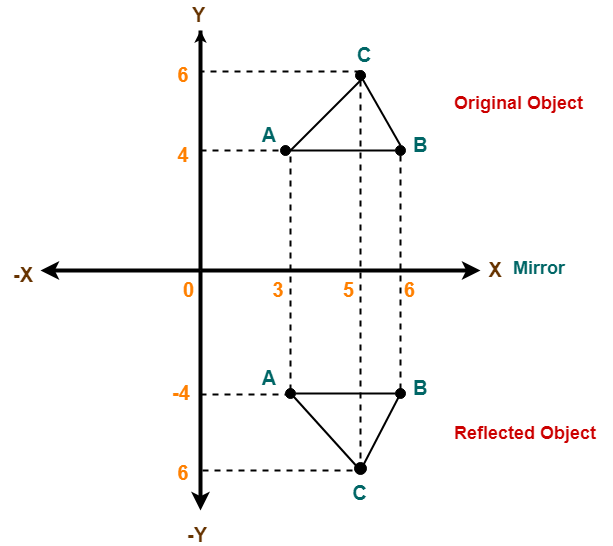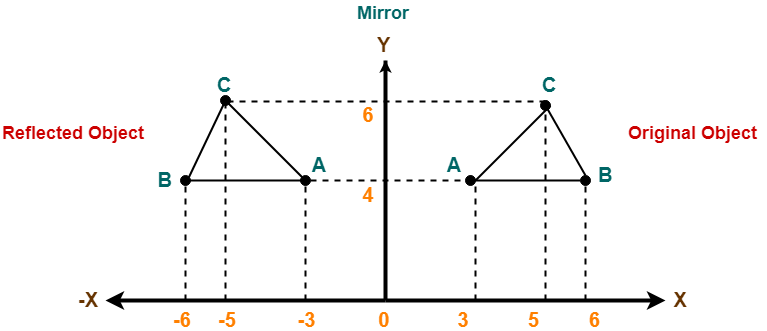3D Transformations in Computer Graphics-
We have discussed-
- Transformation is a process of modifying and re-positioning the existing graphics.
- 3D Transformations take place in a three dimensional plane.
In computer graphics, various transformation techniques are-
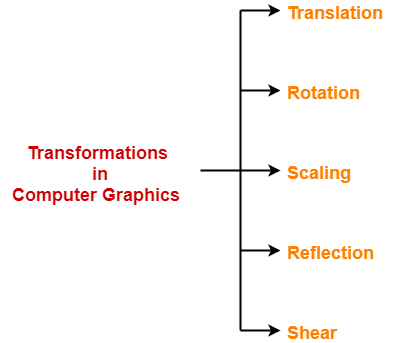
In this article, we will discuss about 3D Reflection in Computer Graphics.
3D Reflection in Computer Graphics-
- Reflection is a kind of rotation where the angle of rotation is 180 degree.
- The reflected object is always formed on the other side of mirror.
- The size of reflected object is same as the size of original object.
Consider a point object O has to be reflected in a 3D plane.
Let-
- Initial coordinates of the object O = (Xold, Yold, Zold)
- New coordinates of the reflected object O after reflection = (Xnew, Ynew,Znew)
In 3 dimensions, there are 3 possible types of reflection-

- Reflection relative to XY plane
- Reflection relative to YZ plane
- Reflection relative to XZ plane
Reflection Relative to XY Plane:
This reflection is achieved by using the following reflection equations-
- Xnew = Xold
- Ynew = Yold
- Znew = -Zold
In Matrix form, the above reflection equations may be represented as-

Reflection Relative to YZ Plane:
This reflection is achieved by using the following reflection equations-
- Xnew = -Xold
- Ynew = Yold
- Znew = Zold
In Matrix form, the above reflection equations may be represented as-
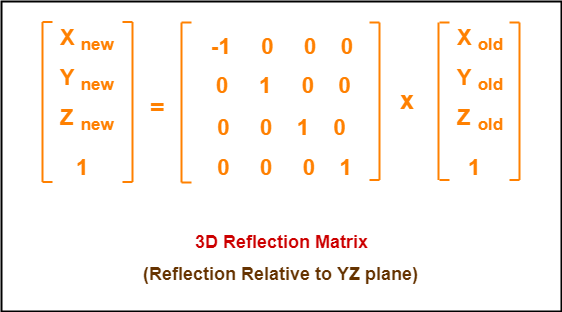
Reflection Relative to XZ Plane:
This reflection is achieved by using the following reflection equations-
- Xnew = Xold
- Ynew = -Yold
- Znew = Zold
In Matrix form, the above reflection equations may be represented as-
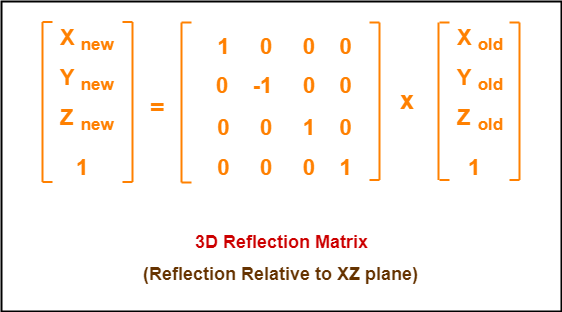
PRACTICE PROBLEMS BASED ON 3D REFLECTION IN COMPUTER GRAPHICS-
Problem-01:
Given a 3D triangle with coordinate points A(3, 4, 1), B(6, 4, 2), C(5, 6, 3). Apply the reflection on the XY plane and find out the new coordinates of the object.
Solution-
Given-
- Old corner coordinates of the triangle = A (3, 4, 1), B(6, 4, 2), C(5, 6, 3)
- Reflection has to be taken on the XY plane
For Coordinates A(3, 4, 1)
Let the new coordinates of corner A after reflection = (Xnew, Ynew, Znew).
Applying the reflection equations, we have-
- Xnew = Xold = 3
- Ynew = Yold = 4
- Znew = -Zold = -1
Thus, New coordinates of corner A after reflection = (3, 4, -1).
For Coordinates B(6, 4, 2)
Let the new coordinates of corner B after reflection = (Xnew, Ynew, Znew).
Applying the reflection equations, we have-
- Xnew = Xold = 6
- Ynew = Yold = 4
- Znew = -Zold = -2
Thus, New coordinates of corner B after reflection = (6, 4, -2).
For Coordinates C(5, 6, 3)
Let the new coordinates of corner C after reflection = (Xnew, Ynew, Znew).
Applying the reflection equations, we have-
- Xnew = Xold = 5
- Ynew = Yold = 6
- Znew = -Zold = -3
Thus, New coordinates of corner C after reflection = (5, 6, -3).
Thus, New coordinates of the triangle after reflection = A (3, 4, -1), B(6, 4, -2), C(5, 6, -3).
Problem-02:
Given a 3D triangle with coordinate points A(3, 4, 1), B(6, 4, 2), C(5, 6, 3). Apply the reflection on the XZ plane and find out the new coordinates of the object.
Solution-
Given-
- Old corner coordinates of the triangle = A (3, 4, 1), B(6, 4, 2), C(5, 6, 3)
- Reflection has to be taken on the XZ plane
For Coordinates A(3, 4, 1)
Let the new coordinates of corner A after reflection = (Xnew, Ynew, Znew).
Applying the reflection equations, we have-
- Xnew = Xold = 3
- Ynew = -Yold = -4
- Znew = Zold = 1
Thus, New coordinates of corner A after reflection = (3, -4, 1).
For Coordinates B(6, 4, 2)
Let the new coordinates of corner B after reflection = (Xnew, Ynew, Znew).
Applying the reflection equations, we have-
- Xnew = Xold = 6
- Ynew = -Yold = -4
- Znew = Zold = 2
Thus, New coordinates of corner B after reflection = (6, -4, 2).
For Coordinates C(5, 6, 3)
Let the new coordinates of corner C after reflection = (Xnew, Ynew, Znew).
Applying the reflection equations, we have-
- Xnew = Xold = 5
- Ynew = -Yold = -6
- Znew = Zold = 3
Thus, New coordinates of corner C after reflection = (5, -6, 3).
Thus, New coordinates of the triangle after reflection = A (3, -4, 1), B(6, -4, 2), C(5, -6, 3).
To gain better understanding about 3D Reflection in Computer Graphics,
Next Article- 3D Shearing in Computer Graphics
Get more notes and other study material of Computer Graphics.
Watch video lectures by visiting our YouTube channel LearnVidFun.
